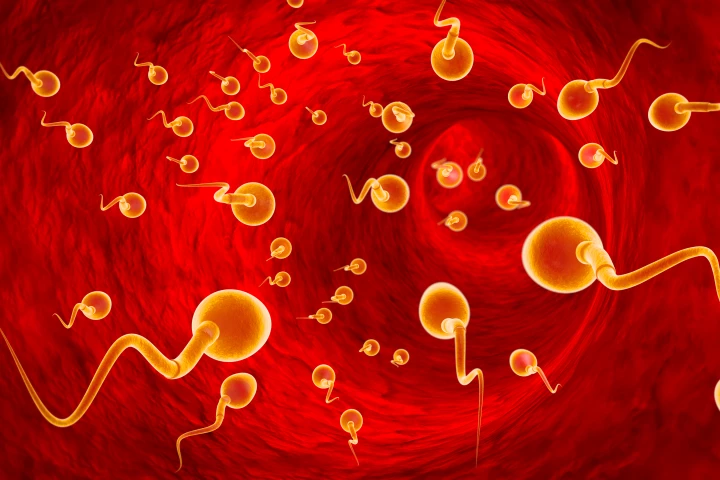Reproduction
-
In one small step for humankind, scientists have seen a fertilized mouse egg develop naturally and normally into early embryonic form. While a long way to go, it’s a positive sign that mammalian – namely, human – reproduction can take place in space.
-
During the European frog's 'explosive breeding' sessions, it's not uncommon to see multiple males pile on a single female. Now, they're fighting back, performing some Oscar-worthy acting to convince their pushy mates that the coupling is a dead end.
-
Believe it or not, male sexual desire actually begins in the brain. Scientists have found the neural circuit that triggers mating behaviors and the ensuing pleasure and reward feedback in mice. They hope it can lead to new drugs to treat dysfunction.
-
By decoding a genetic process responsible for asexual reproduction, researchers induced virgin births for the first time in a normally sexual fruit fly species. It was then discovered that the trait was passed down to all of the flies' daughters.
-
Scientists have observed the first known “virgin birth” in a female crocodile, kept alone in captivity for 16 years. The find reveals that this unusual form of reproduction is possible in more species than we thought – including, perhaps, dinosaurs.
-
There's no such thing as a biological clock for female mole-rat queens, which don’t experience a drop in fertility as they age. Now new discoveries about their remarkable reproduction may help prolong or boost human fertility.
-
A striking study published in 2017 reported a 50% decline in the average sperm count since the 1970s. Now, a follow-up study is suggesting the decline in sperm counts is accelerating. But not all researchers are convinced the data is as clear as it seems.
-
It has long been known that insects such as bees help plants reproduce, by spreading pollen from one plant to another. Now, however, a similar arrangement has been discovered in the undersea world – involving red algae and tiny crustaceans.
-
Scientists have developed first-of-a-kind "Xenobots" from frog cells with the ability to self-replicate, a technology that could find use in regenerative medicine and and reveals a type of biological reproduction never before observed in science.
-
The California condor is one of the rarest birds in the world, but nature may be giving the species a leg-up. Scientists have found two condor chicks born from unfertilized eggs, in a form of asexual reproduction that’s extremely uncommon in birds.
-
A proof-of-concept study is suggesting epigenetic biomarkers in a father's sperm can predict how susceptible their offspring will be to developing ASD. The research is still in preliminary stages requiring further investigation in larger cohorts.
-
The oldest known animal sperm sample has been discovered, dating back 100 million years. Dozens of ostracods were found in a piece of amber with their “soft parts” out, and their giant sperm measuring around a third of the animals’ body length.
Load More











